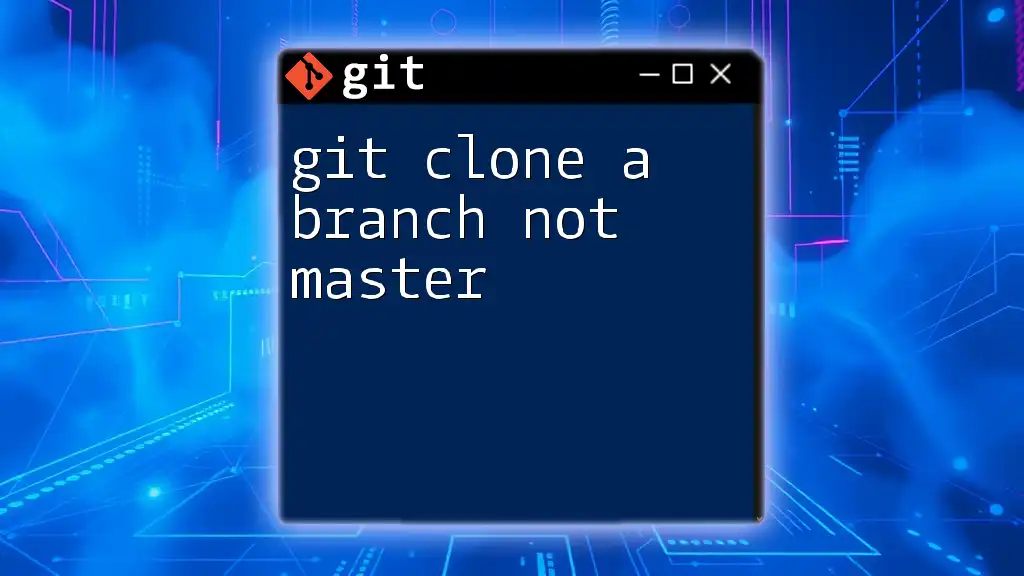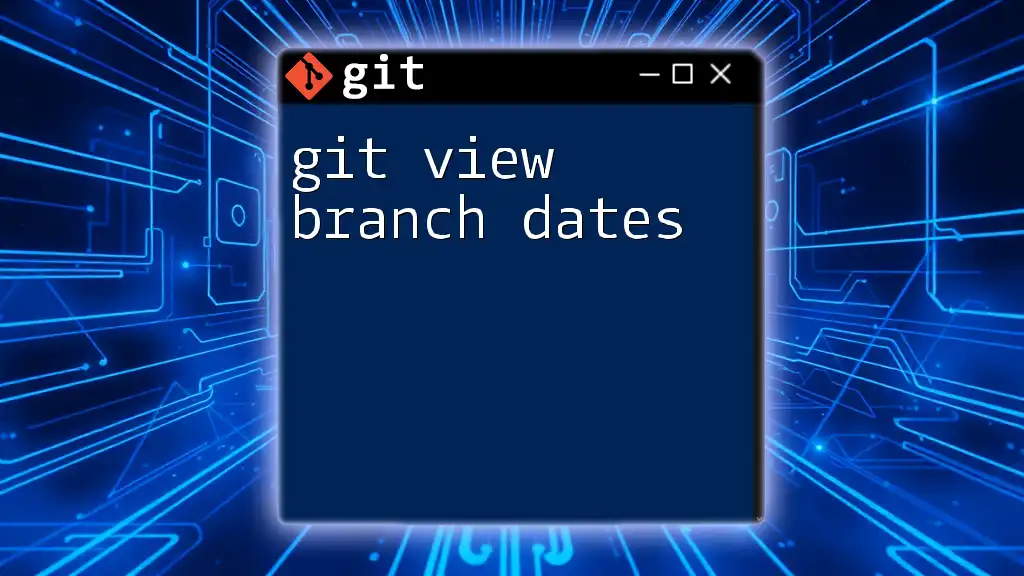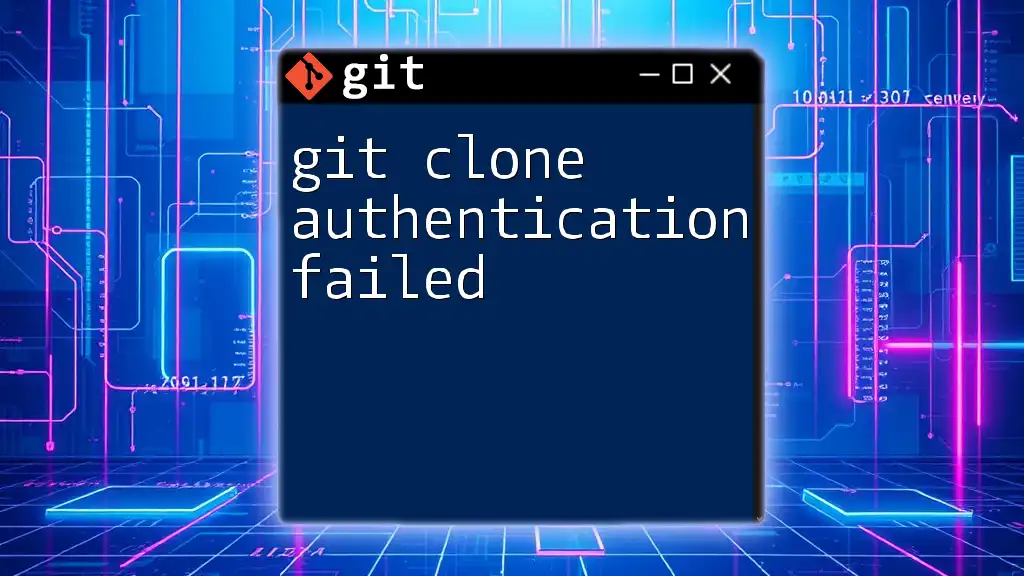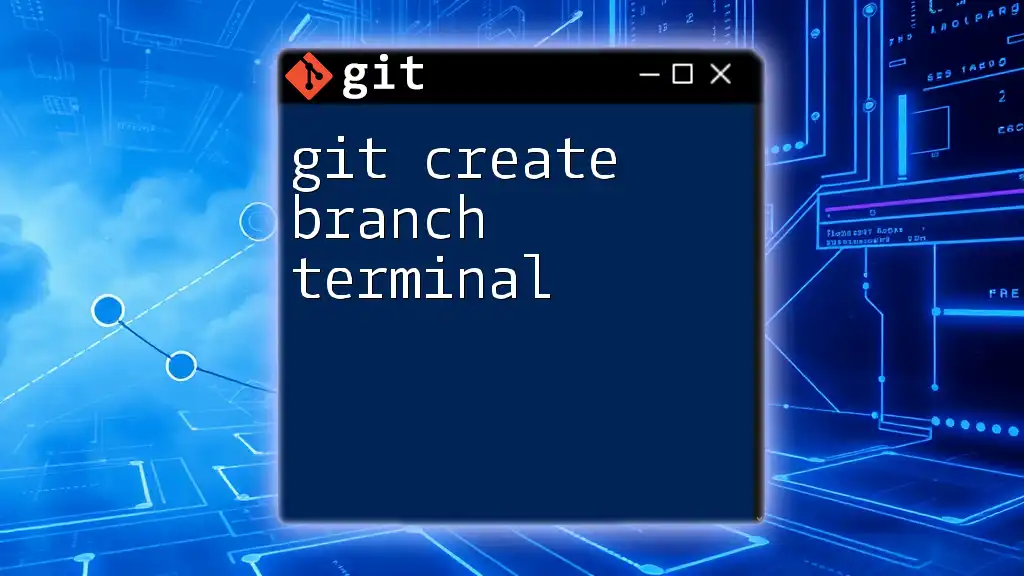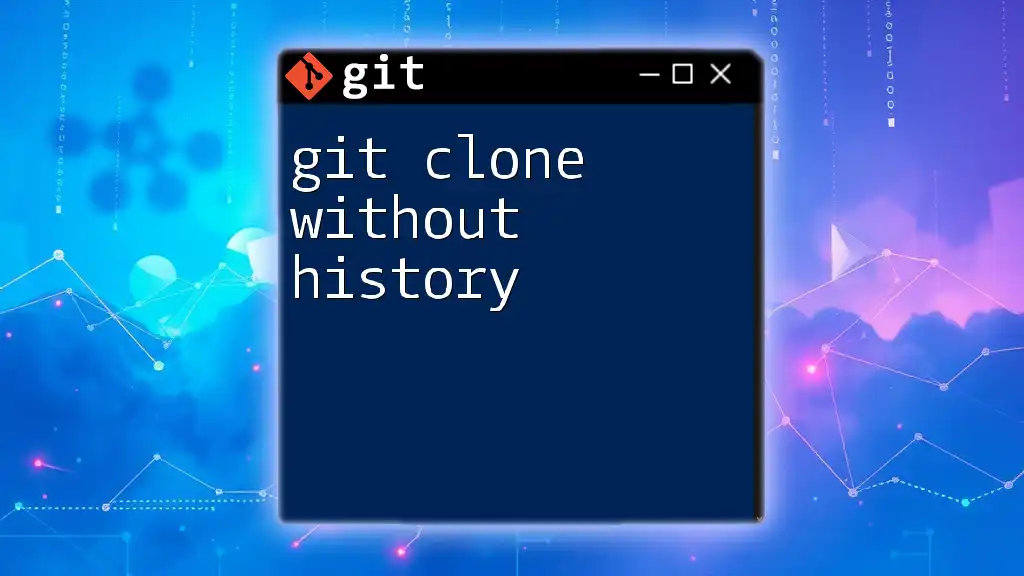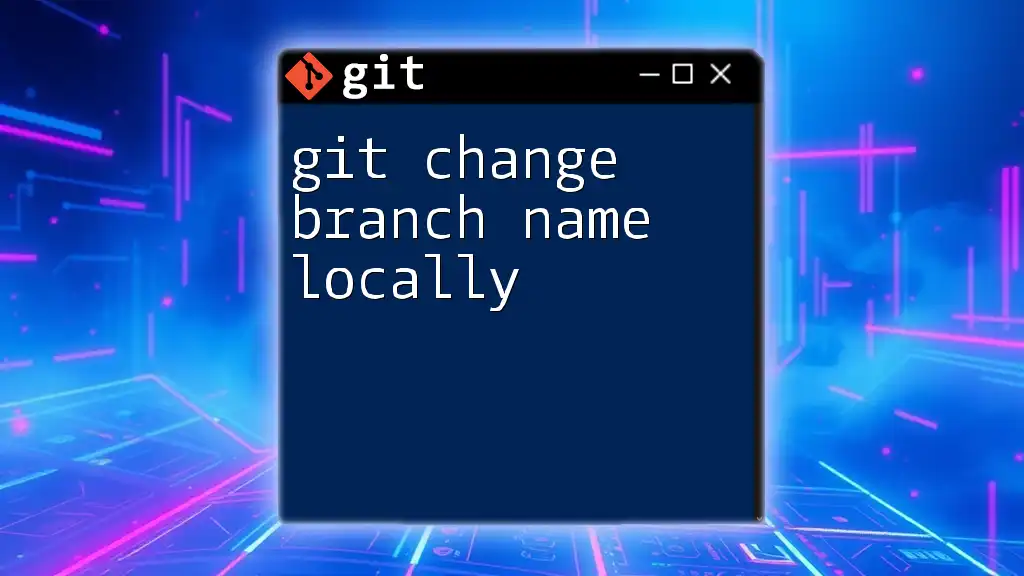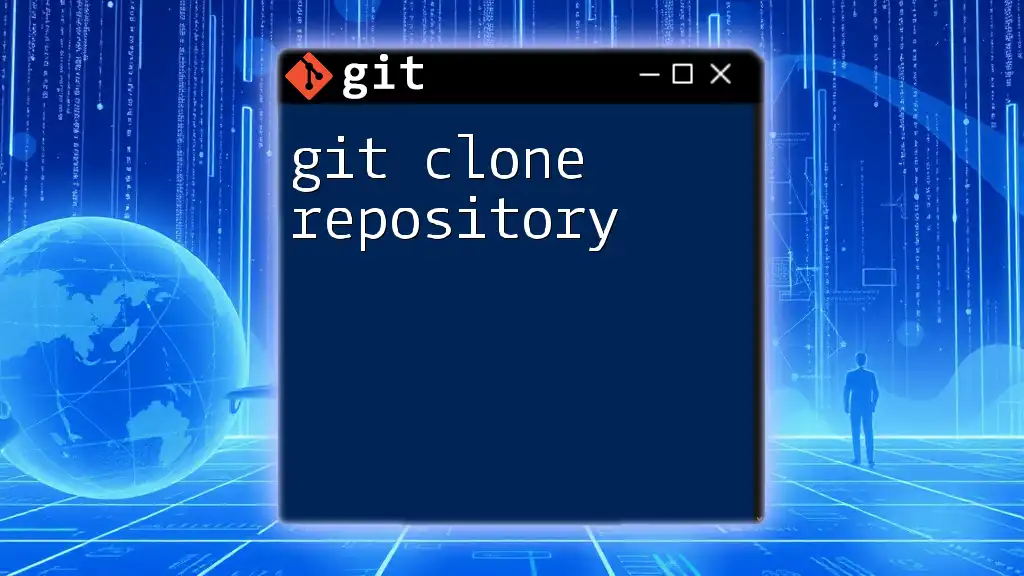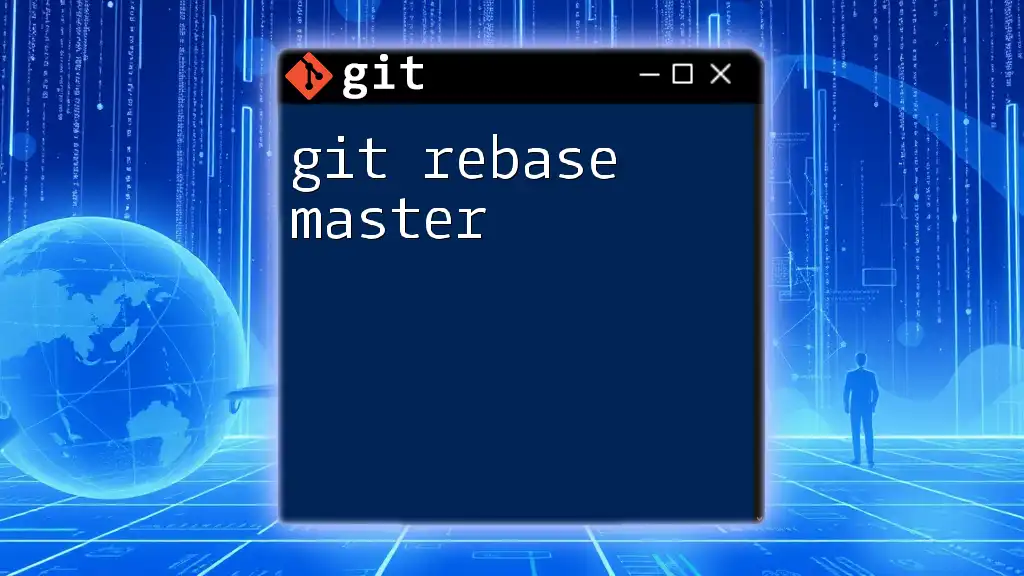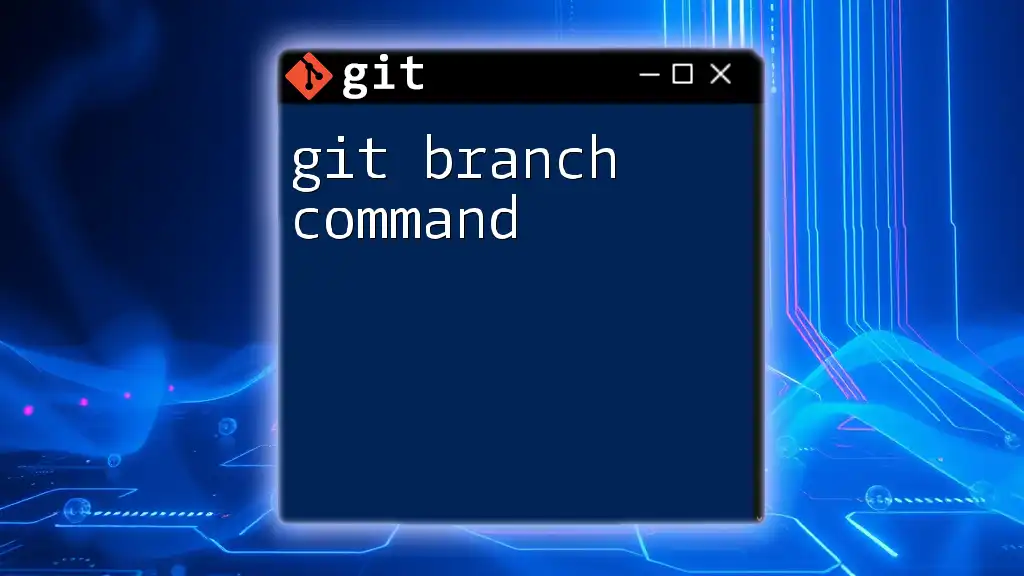To clone a specific branch of a Git repository instead of the default master branch, you can use the following command in your terminal:
git clone --single-branch --branch <branch-name> <repository-url>
Replace `<branch-name>` with the name of the branch you want to clone and `<repository-url>` with the URL of the Git repository.
Understanding Git and Its Branching System
What is Git?
Git is a distributed version control system that has revolutionized the way developers track and manage changes to their code. It enables multiple contributors to work on a project simultaneously, keeping a comprehensive history of all changes made. This functionality makes Git an essential tool in modern software development, facilitating collaboration and offering flexibility in code management.
Introduction to Git Branches
A branch in Git acts as an independent line of development where you can make changes without affecting the main codebase. Branching is crucial for managing different features, bug fixes, or experiments in parallel, minimizing disruptions to the primary project. This practice enhances team collaboration and enables developers to work on their tasks without stepping on each other's toes.
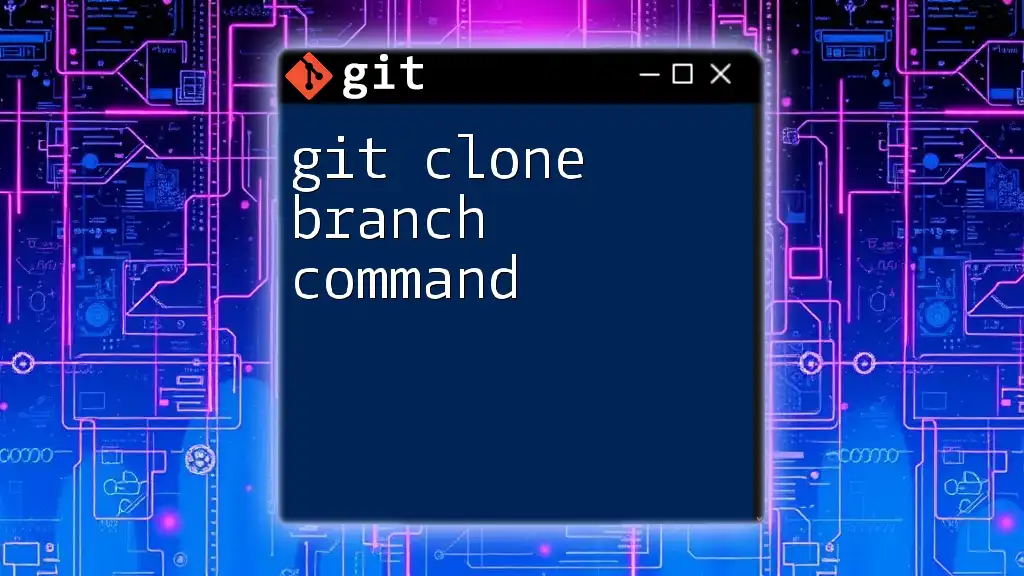
Why Clone a Branch Other Than Master?
Use Cases for Cloning Non-Master Branches
Cloning branches other than the 'master' branch has several practical applications:
-
Development Features: When building new features, it's effective to clone the relevant branch to focus on specific implementations without interfering with the main branch.
-
Bug Fixes: Cloning a branch dedicated to bug fixes allows developers to work on resolving issues while maintaining the stability of the master branch.
-
Experimentation: For testing new ideas or approaches, isolating your work in a separate branch minimizes risk, ensuring the main codebase stays intact.
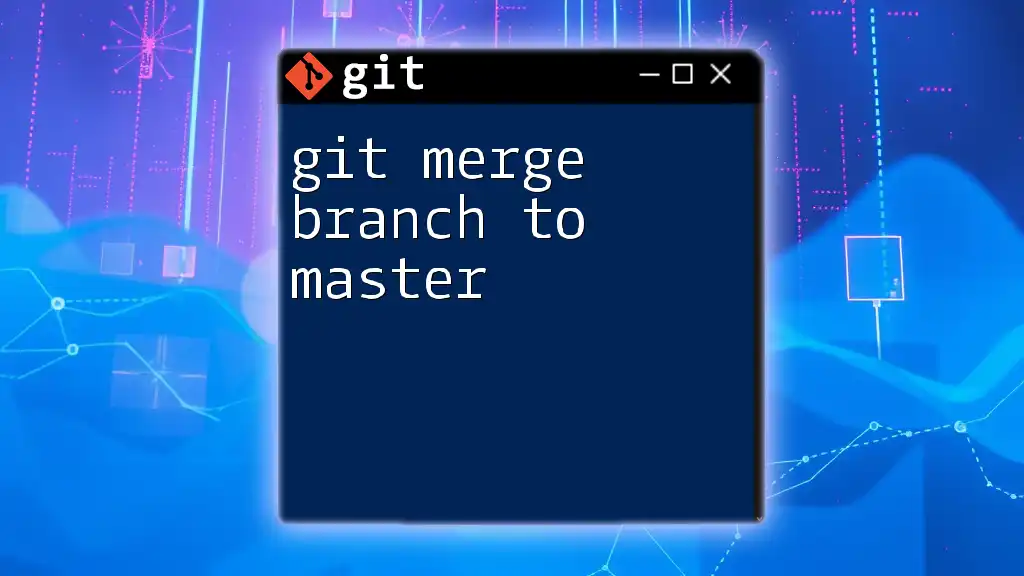
Cloning a Repository and Branch Basics
What Does "Cloning" Mean?
In Git, cloning refers to creating a copy of a repository, which includes all its files, commit history, and branches. This process is instrumental for developers who want to contribute to existing projects or examine their architectures.
The Default Behavior of `git clone`
When you run the `git clone` command, the default action is to create a copy of the repository and check out the 'master' branch automatically. Understanding this default behavior is critical because it influences how you interact with the repository right after cloning.
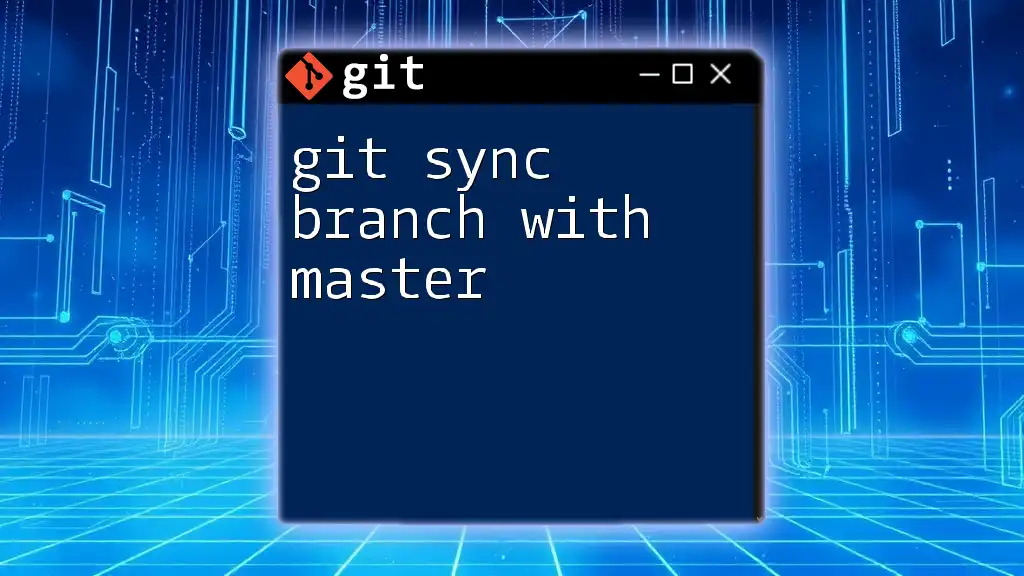
Steps to Clone a Specific Branch
Cloning a Repository
To clone a repository, you generally use the command:
git clone [repository_url]
This command creates a local copy of the specified repository, with the master branch checked out by default. However, this may not align with your current task if you intend to work on a different branch.
Cloning a Specific Branch
To clone a specific branch instead of the default 'master,' use the following command:
git clone -b [branch_name] [repository_url]
Example Explanation
For instance, if you want to clone a branch named `feature-branch` from a repository, you would run:
git clone -b feature-branch https://github.com/user/repo.git
In this command:
- `-b` specifies the branch you want to clone.
- The following text is the URL of the remote repository.
This approach is especially useful when the work you're interested in resides on a branch other than the master.
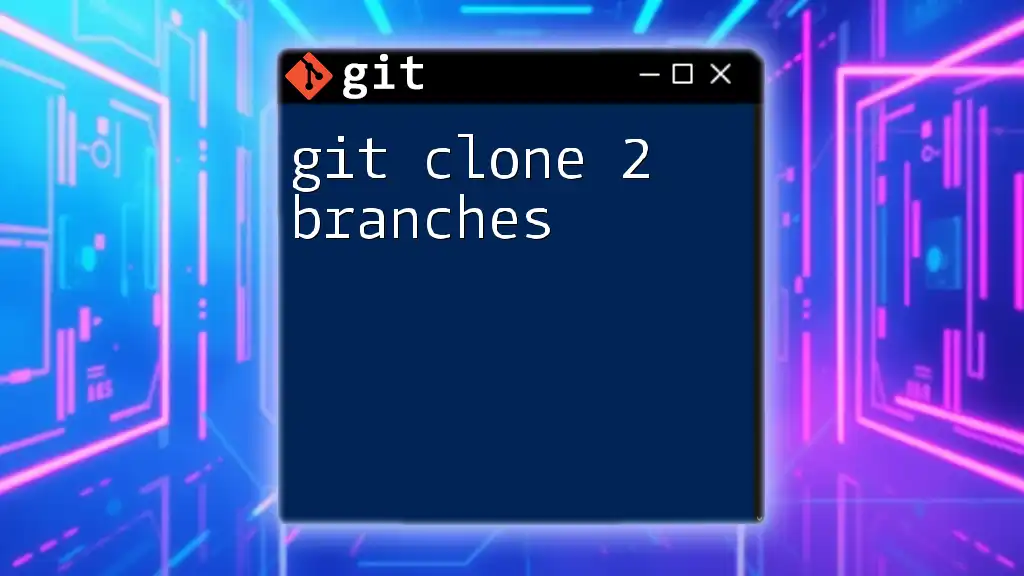
Advanced Branch Cloning Techniques
Cloning and Checkout in One Step
If you want to avoid cloning all branches when you're only interested in a specific one, consider using the `--single-branch` option:
git clone --single-branch -b [branch_name] [repository_url]
Why Use This Option?
By using this command, you minimize disk space usage and simplify the repository, downloading only the specified branch instead of the entire history of all branches. This approach is advantageous when the repository is large or when you're focused on just one aspect of the project.
Cloning a Remote Repository and Listing Branches
To view the available branches before cloning, use:
git branch -r
This command lists all remote branches, allowing you to determine the most suitable branch for your needs. Understanding this output is vital for an effective cloning process.
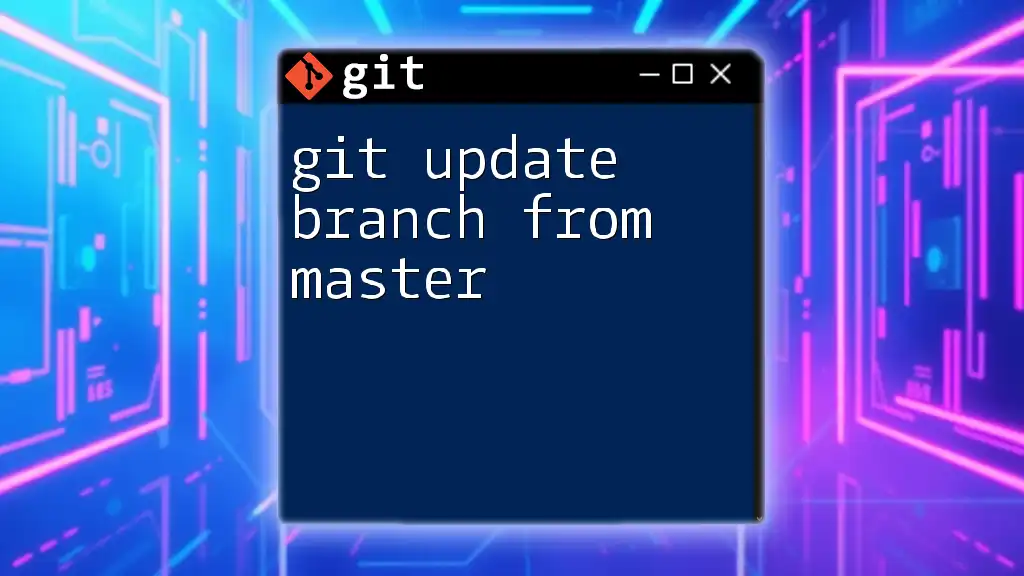
Verifying the Cloned Branch
Checking Out the Cloned Branch
After cloning a branch, confirm that you're on the right one by navigating into the repository and checking out the branch explicitly:
cd repo
git checkout [branch_name]
This step ensures that you are working on the correct branch and not inadvertently engaged with an unintended one.
Checking Remote Tracking Branches
To verify successful cloning and tracking of the correct branch, utilize:
git branch -vv
This command provides a detailed view of your local branches and shows which remote branches they track, ensuring everything is set up correctly.
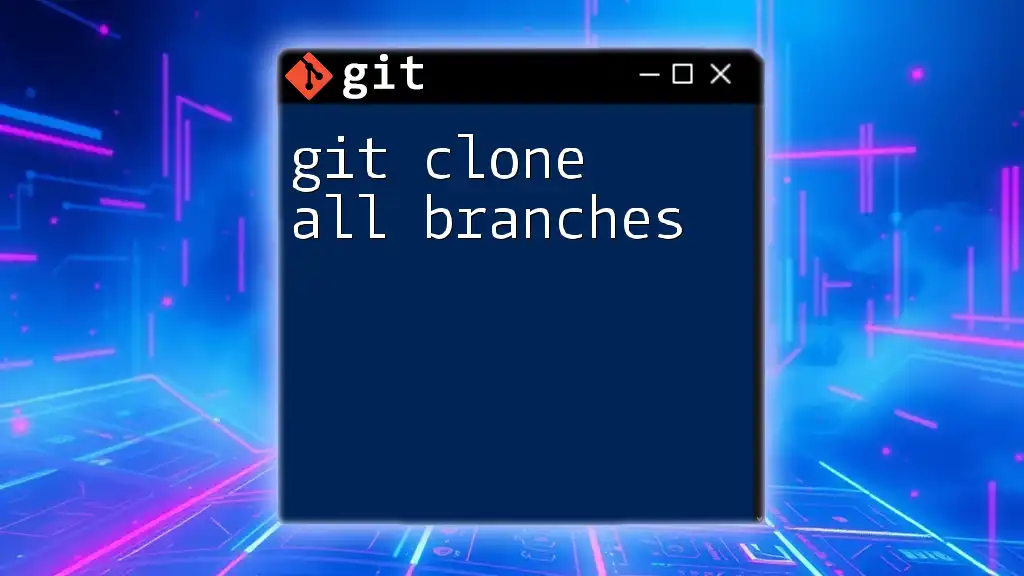
Common Issues and Troubleshooting
Problems Encountered While Cloning
While cloning a branch, you may face some common issues, such as:
-
Access Rights Issues: If you do not have permission to access the repository, you may receive authentication errors.
-
Network Connectivity Problems: A lack of network connection can prevent successful cloning.
How to Resolve Cloning Issues
To tackle these problems, consider the following solutions:
-
Check Permissions: Ensure you have the necessary permissions to clone the repository, especially if it's private.
-
Test Connectivity: Confirm that your network connection is stable and functioning before attempting to clone.
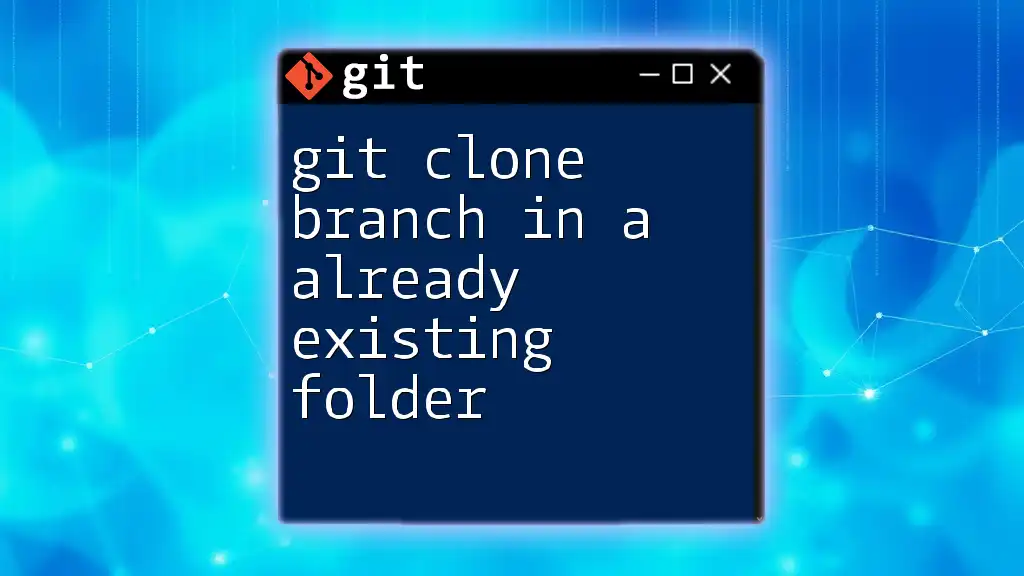
Conclusion
In summary, understanding how to git clone a branch not master is essential for managing your development workflow effectively. This practice allows you to isolate your work, focus on specific features or fixes, and maintain a cleaner and more organized project structure.
For continued learning and deeper insights into Git commands and version control best practices, consider enrolling in structured courses or tutorials that will guide you on mastering Git.

